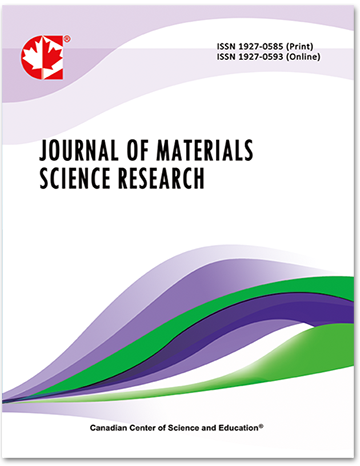A Study on the Development of Organic Thin Film Solar Cell Device With Optimized Hole Transfer Layer of PEDOT:PSS
- Paik-Kyun Shin
- Kumar Palanisamy
- Abhirami Kumar
- Katsuhiko Kato
- Shizuyasu Ochiai
Abstract
Organic thin film solar cells show generally lower power conversion efficiencies than those of the solar cells based on inorganic active materials. To solve the problem diverse research works have been tried: development of new organic semiconductors; modification of internal structure of active layers by means of organic solvent; design and fabrication of vertical device structure; introduction of buffer layer on the side of cathode electrode. Nevertheless, the buffer layer on the side of anode has not been fully optimized. This study is focused on the representative anode-side-buffer layer of Poly(3,4-ethylenedioxythiophene)(PEDOT): poly(styrenesulfonate) (PSS). PEDOT:PSS is an excellent conducting polymer material with favorably high optical transparency for almost entire range of visible wavelength, which is widely used for organic thin film solar cells as well as for other organic material based electronic devices such as organic light emitting diodes. Aiming for further performance enhancement of organic thin film solar cell device, an optimized condition was studied on the PEDOT:PSS by means of the thickness control and modification of the internal structure via addition of different organic solvents in mixture solution for thin film process.
- Full Text:
 PDF
PDF
- DOI:10.5539/jmsr.v3n1p57
Journal Metrics
Impact Factor 2022 (by WJCI): 0.583
Google-based Impact Factor (2021): 0.52
h-index (December 2021): 22
i10-index (December 2021): 74
h5-index (December 2021): N/A
h5-median (December 2021): N/A
Index
- CAS (American Chemical Society)
- CNKI Scholar
- Elektronische Zeitschriftenbibliothek (EZB)
- EuroPub Database
- Excellence in Research for Australia (ERA)
- Google Scholar
- Infotrieve
- JournalTOCs
- LOCKSS
- NewJour
- PKP Open Archives Harvester
- Qualis/CAPES
- SHERPA/RoMEO
- Standard Periodical Directory
- Universe Digital Library
- WJCI Report
- WorldCat
Contact
- John MartinEditorial Assistant
- jmsr@ccsenet.org
